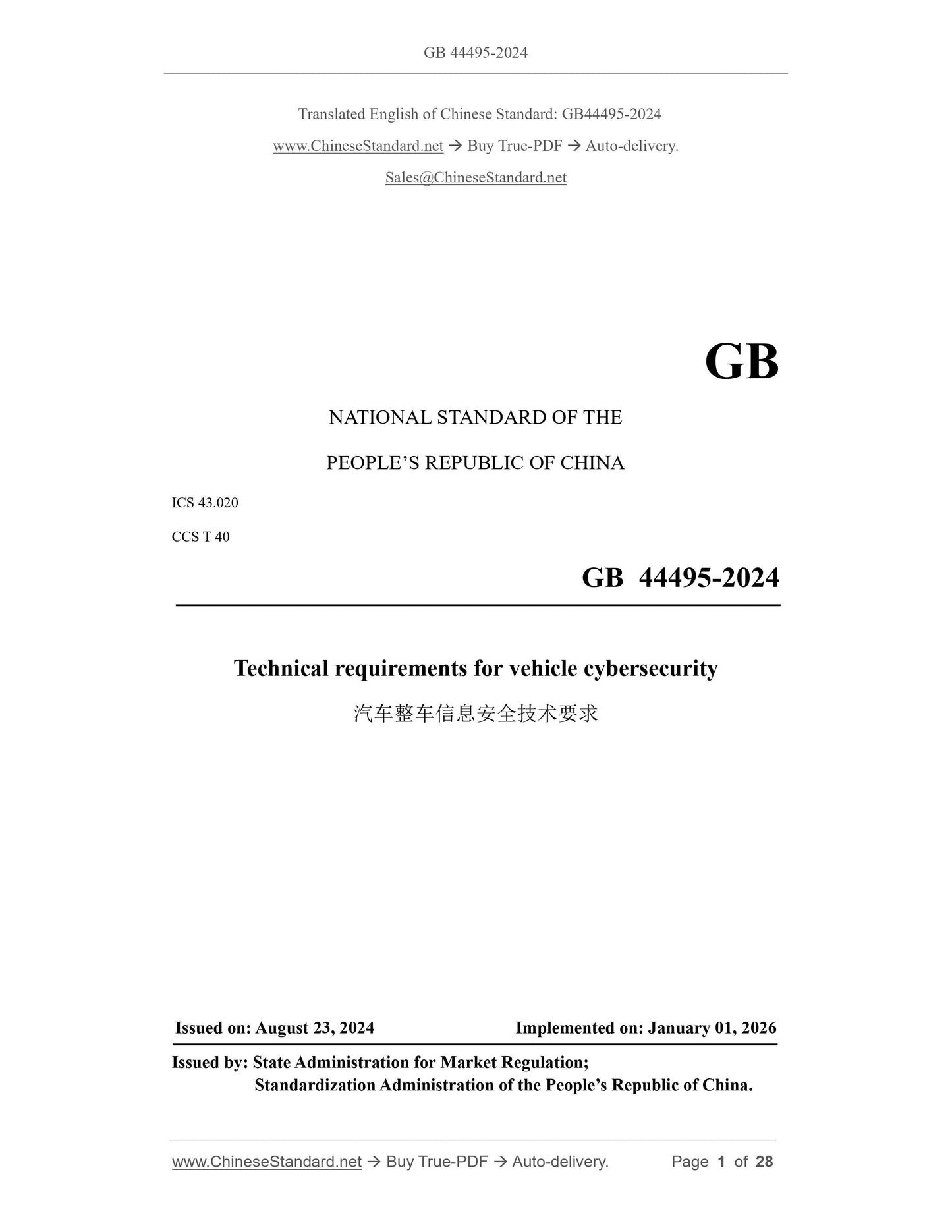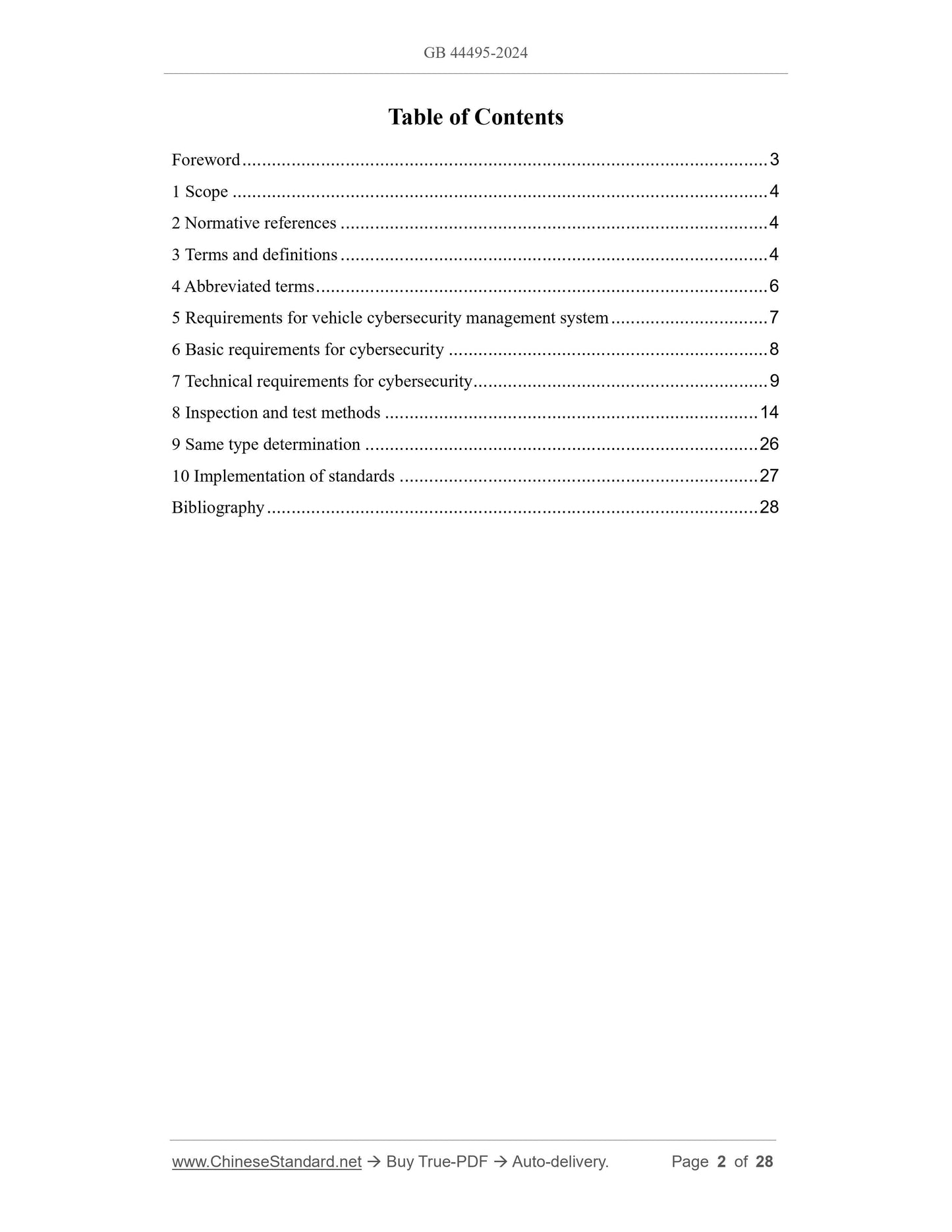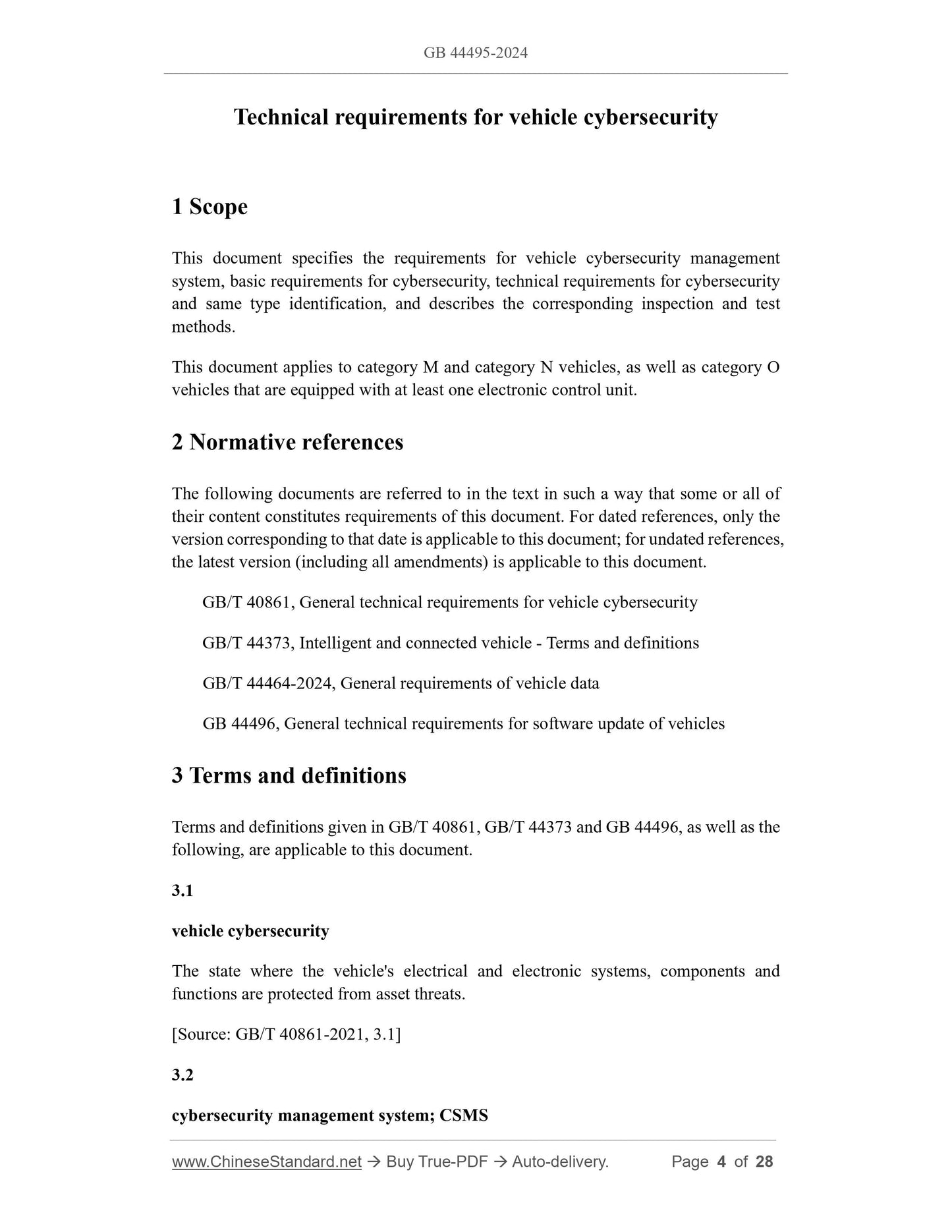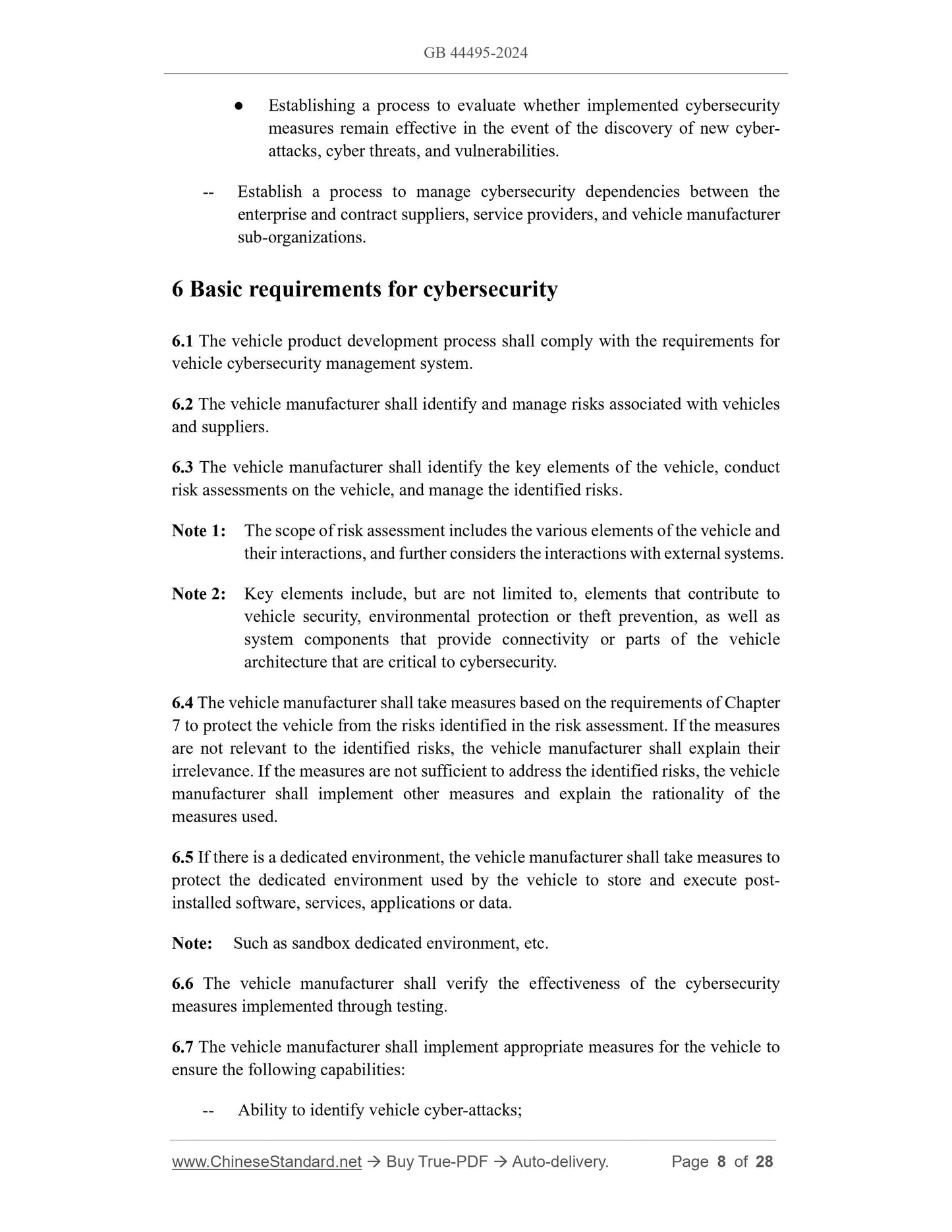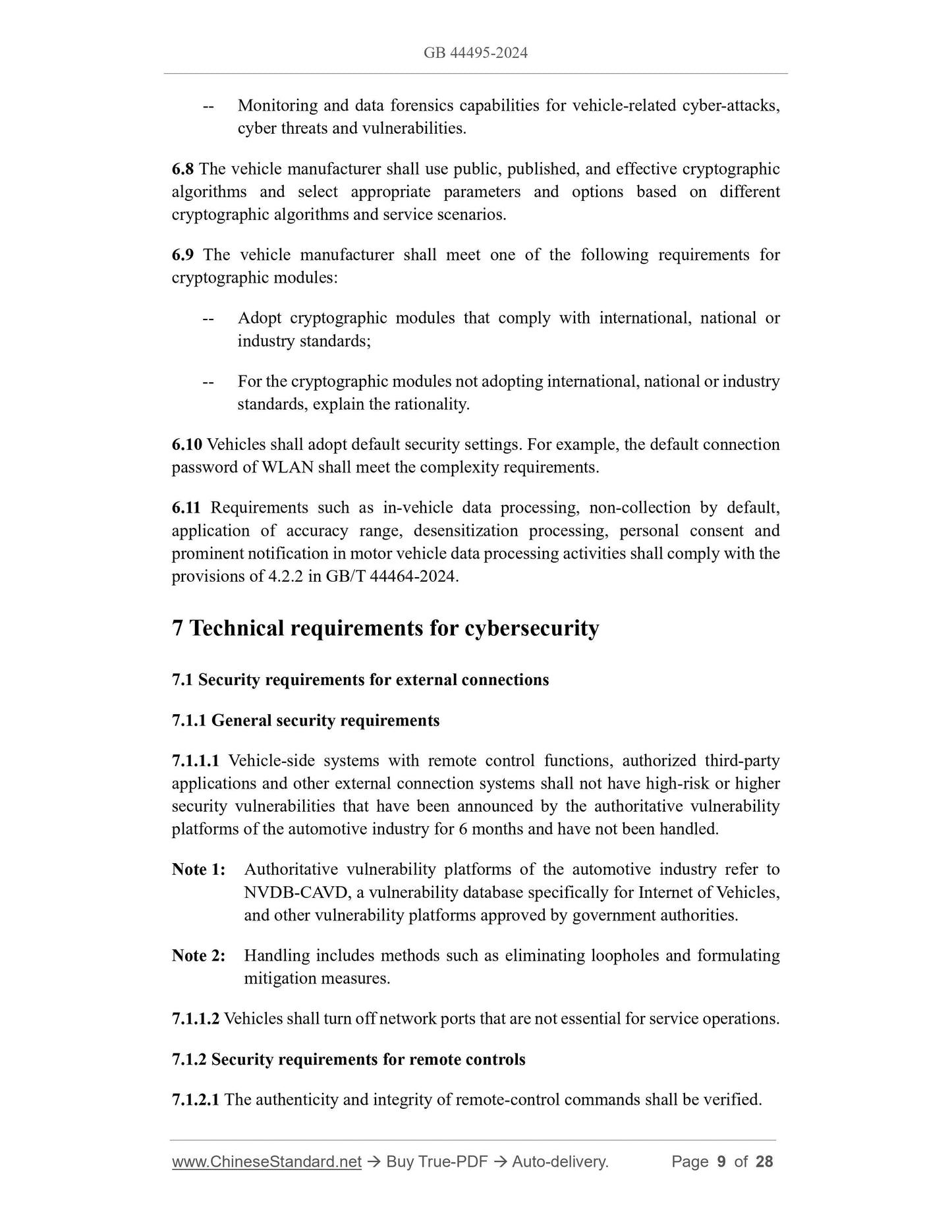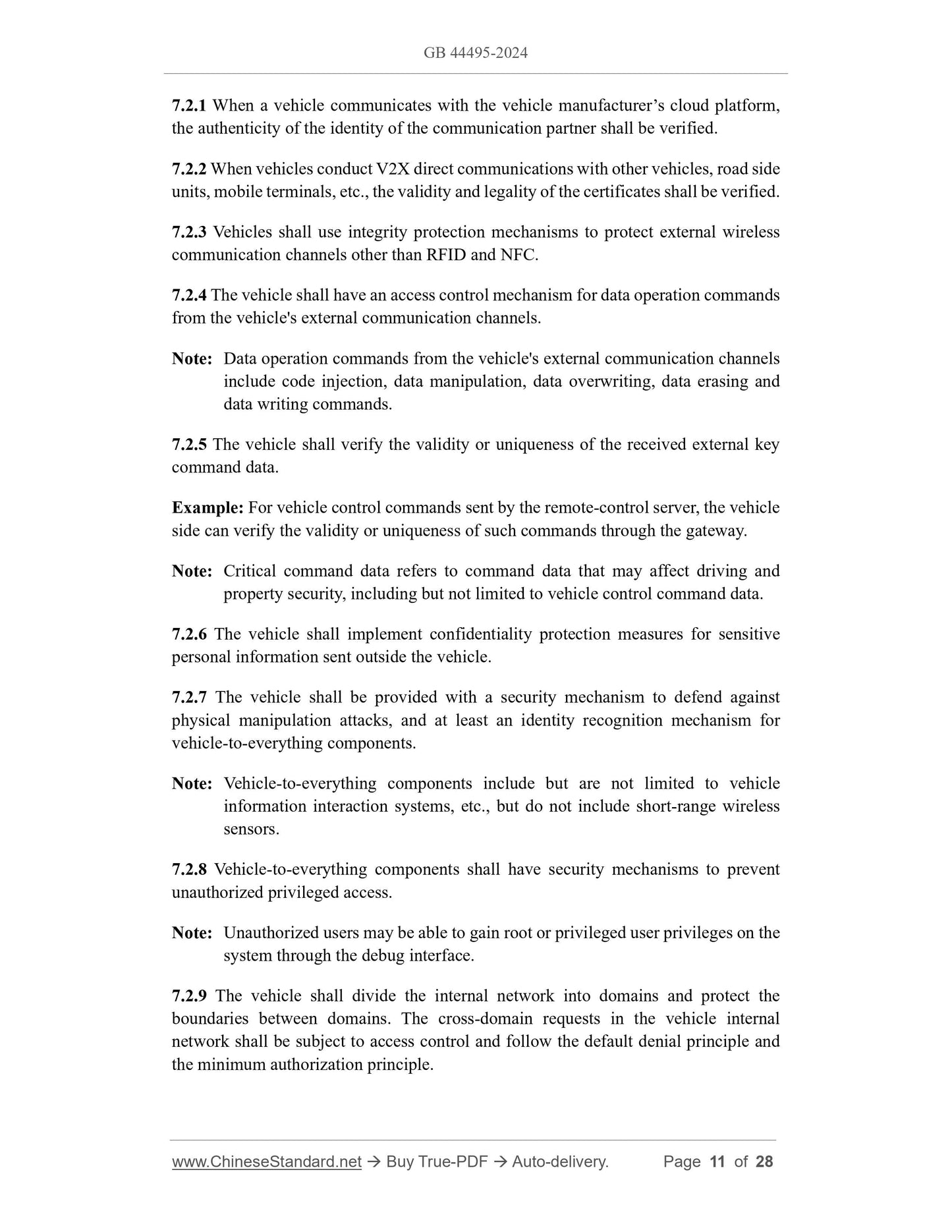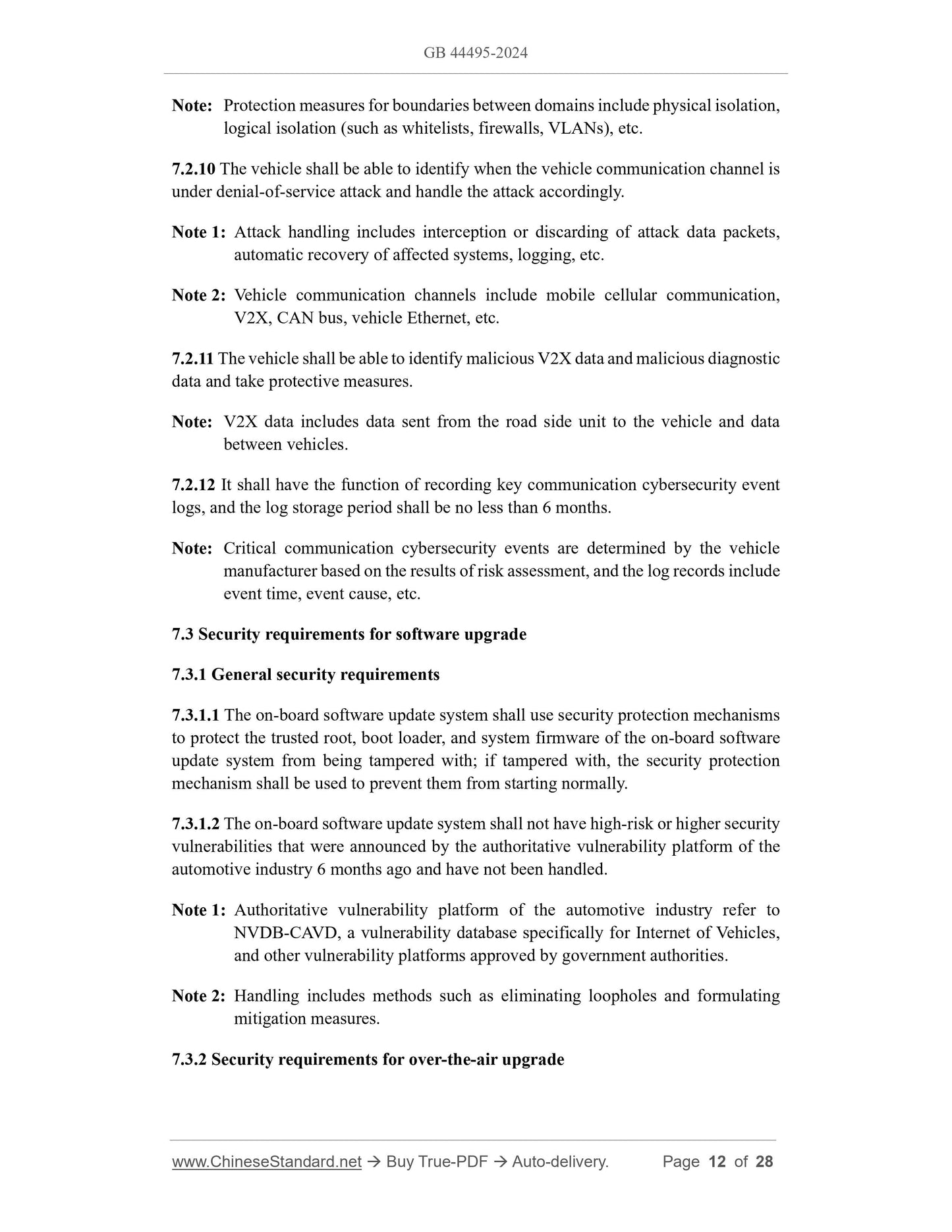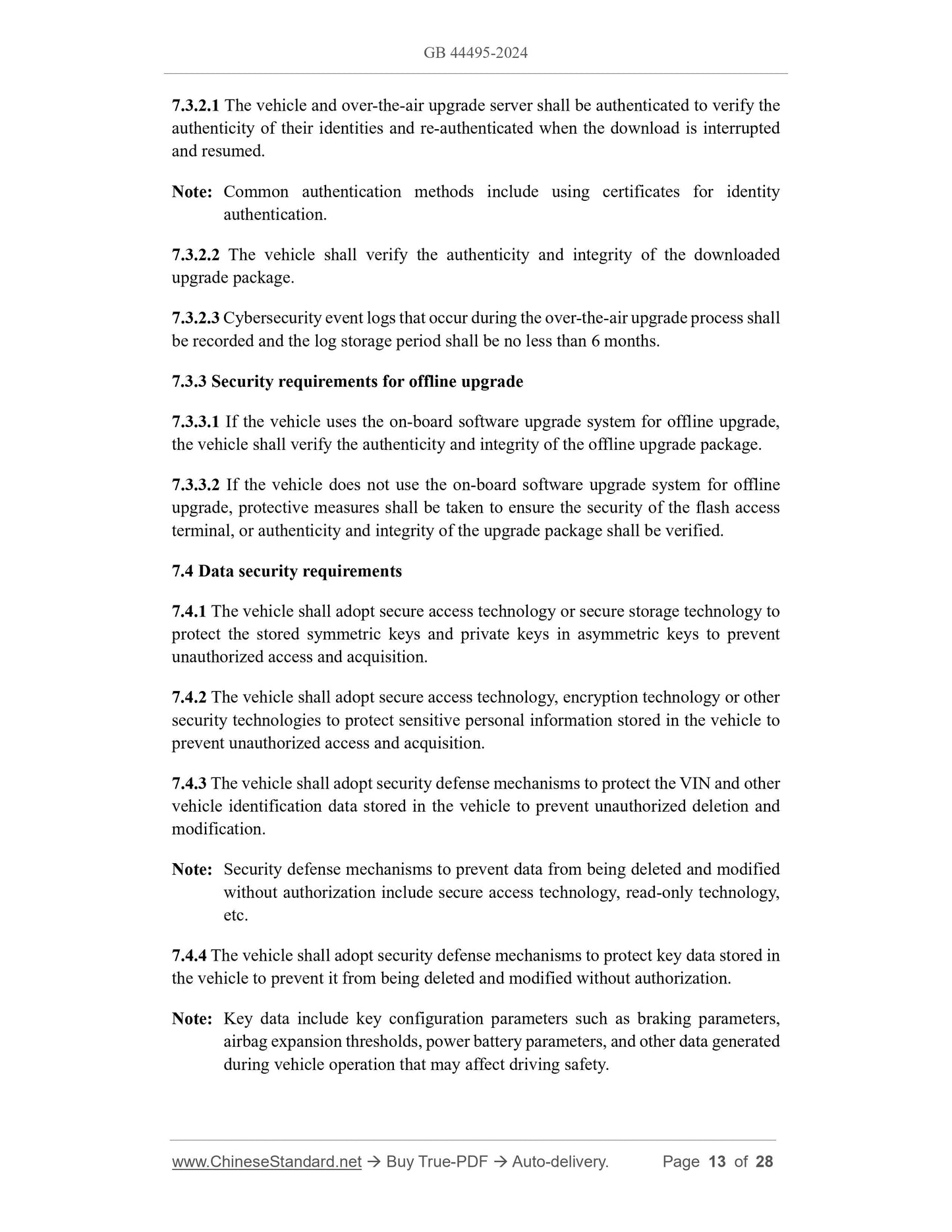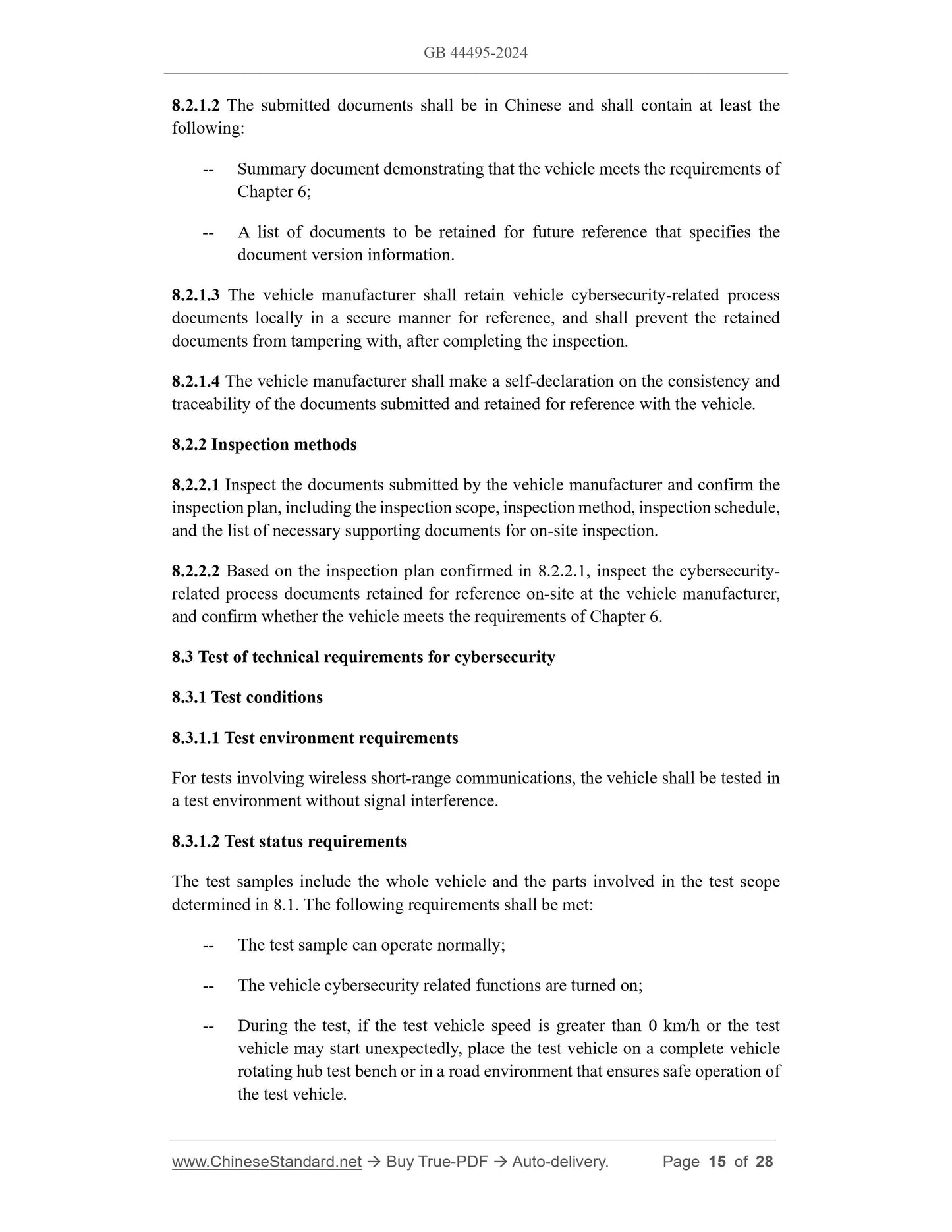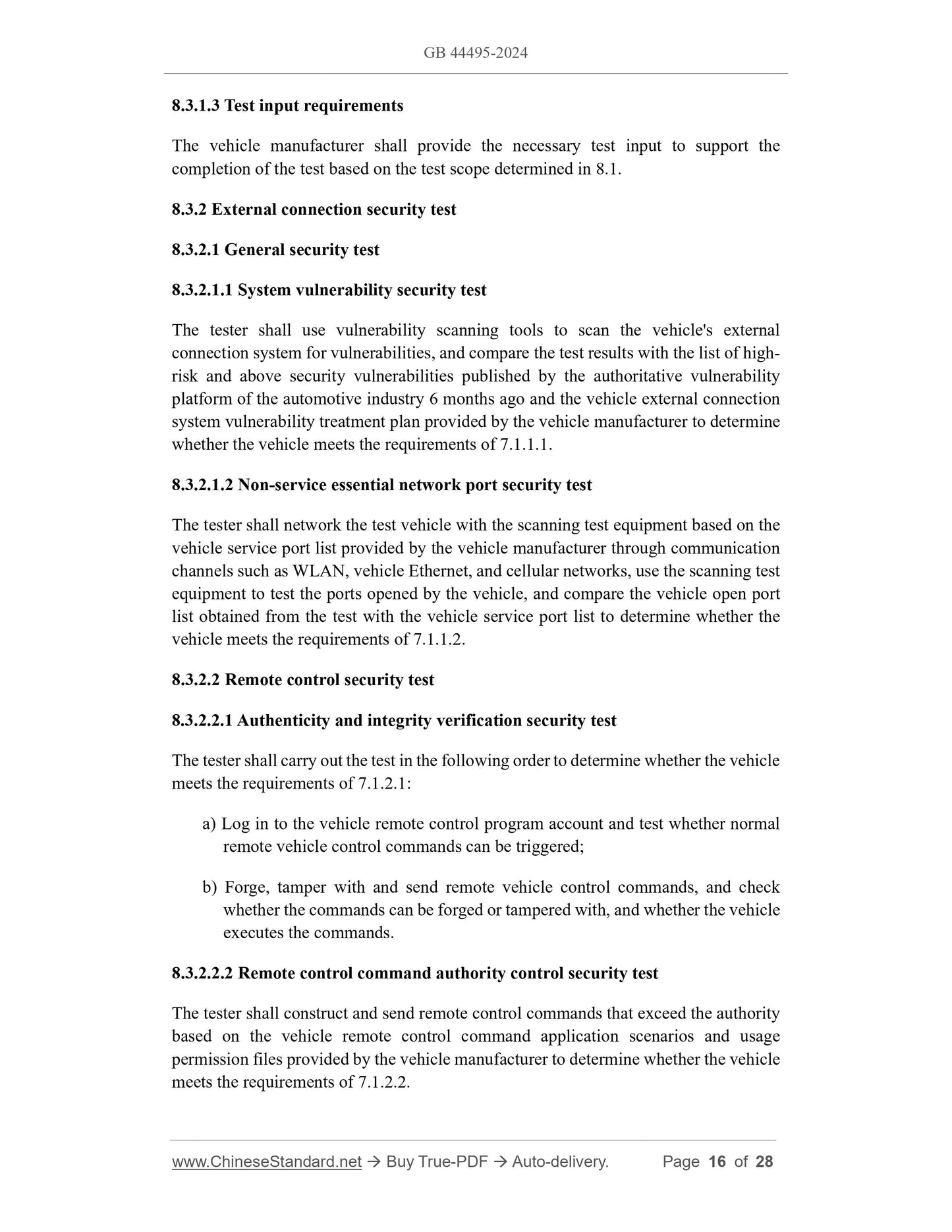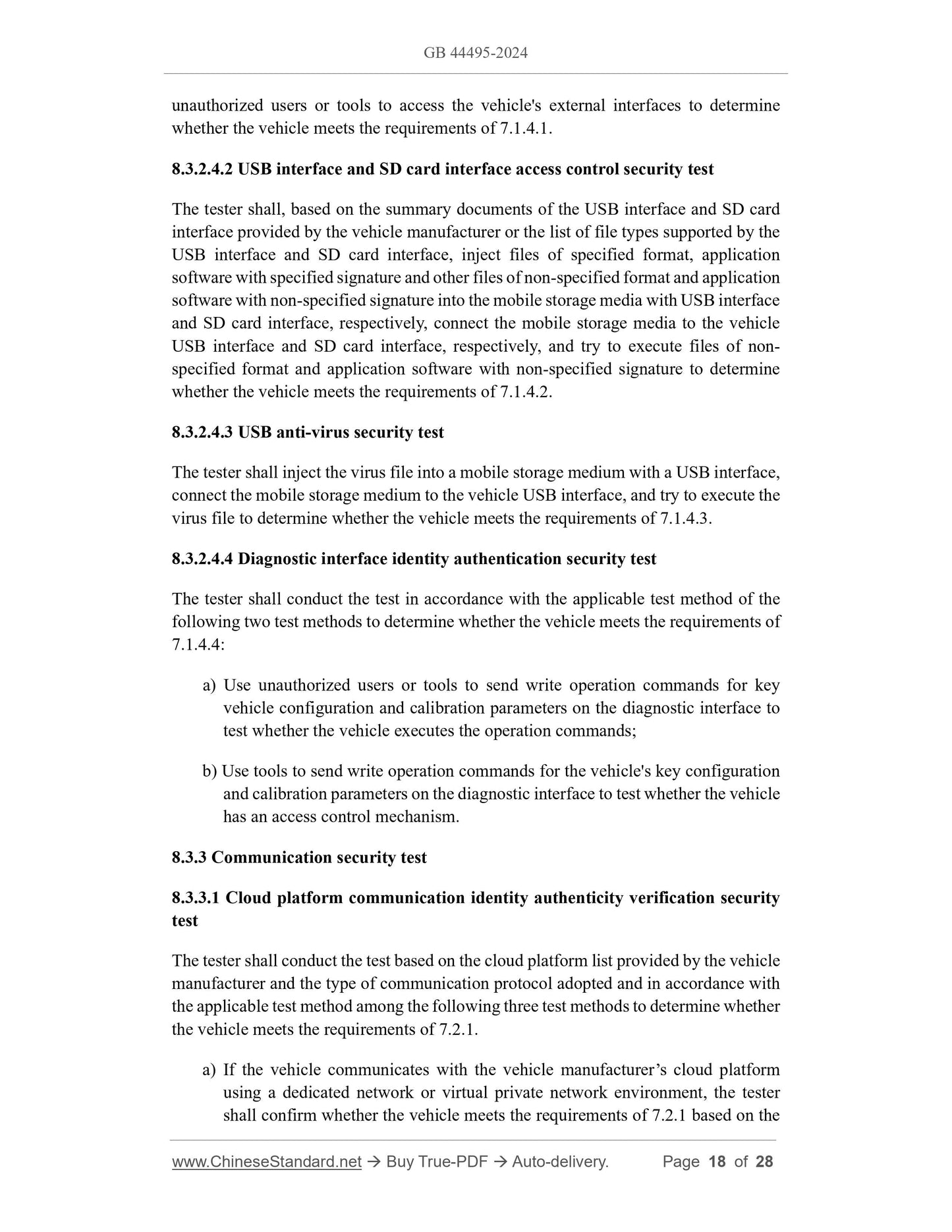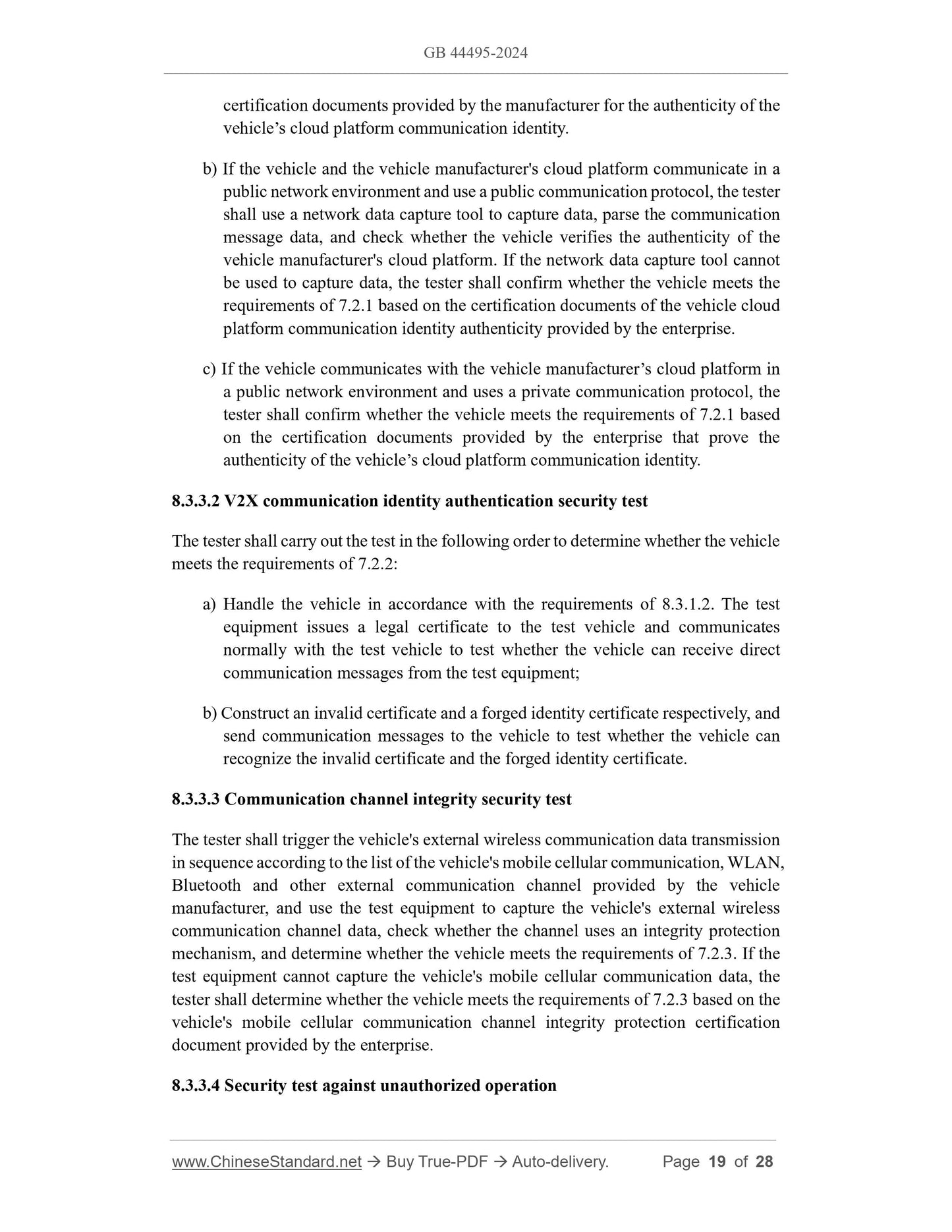1
/
of
12
www.ChineseStandard.us -- Field Test Asia Pte. Ltd.
GB 44495-2024 English PDF
GB 44495-2024 English PDF
Regular price
$305.00
Regular price
Sale price
$305.00
Unit price
/
per
Shipping calculated at checkout.
Couldn't load pickup availability
GB 44495-2024: Technical requirements for vehicle cybersecurity
Delivery: 9 seconds. Download (and Email) true-PDF + Invoice.Get Quotation: Click GB 44495-2024 (Self-service in 1-minute)
Newer / historical versions: GB 44495-2024
Preview True-PDF
Scope
This document specifies the requirements for vehicle cybersecurity managementsystem, basic requirements for cybersecurity, technical requirements for cybersecurity
and same type identification, and describes the corresponding inspection and test
methods.
This document applies to category M and category N vehicles, as well as category O
vehicles that are equipped with at least one electronic control unit.
Basic Data
| Standard ID | GB 44495-2024 (GB44495-2024) |
| Description (Translated English) | Technical requirements for vehicle cybersecurity |
| Sector / Industry | National Standard |
| Classification of Chinese Standard | T40 |
| Classification of International Standard | 43.020 |
| Word Count Estimation | 22,245 |
| Date of Issue | 2024-08-23 |
| Date of Implementation | 2026-01-01 |
| Issuing agency(ies) | State Administration for Market Regulation, China National Standardization Administration |
Share
